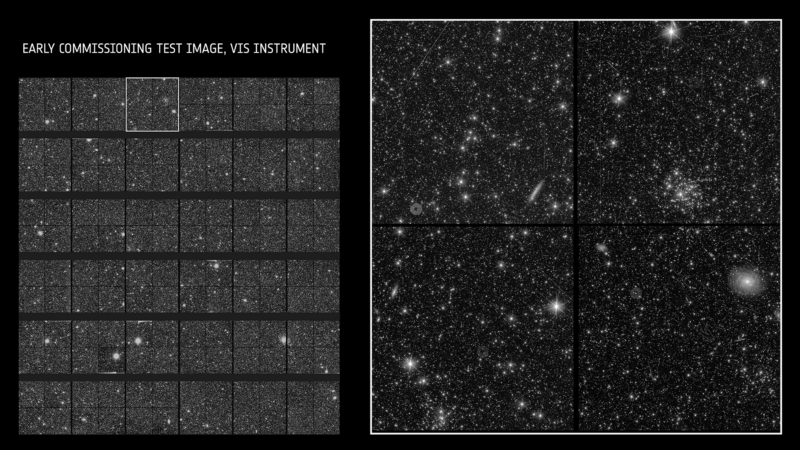Europe turns its new $1.5 billion space telescope on, and happily it works

Enlarge / Euclid's Visible instrument (VIS) will image the sky in visible light (550-900 nm) to take sharp images of billions of galaxies and measure their shapes. This image was taken during the commissioning of Euclid. (credit: ESA/Euclid/Euclid Consortium/NASA)
Nearly one month after launching into space, a European telescope has begun taking its first images and data of the Universe. And to the delight of scientists at the European Space Agency, everything seems to be working rather well.
As part of the months-long commissioning phase, both the telescope's visual and infrared-light cameras have started snapping photos of the cosmos. Scientists who helped develop these cameras-VIS for visible light, and NISP for Near Infrared Spectrograph and Photometer-say the new instruments work superbly.
"We are very pleased that the commissioning phase of Euclid is progressing well," Alessandra Roy, Euclid project manager at the German Space Agency at DLR, said. "The spacecraft will soon reach its final position at a distance of 1.5 million kilometers from Earth and begin scientific observations."